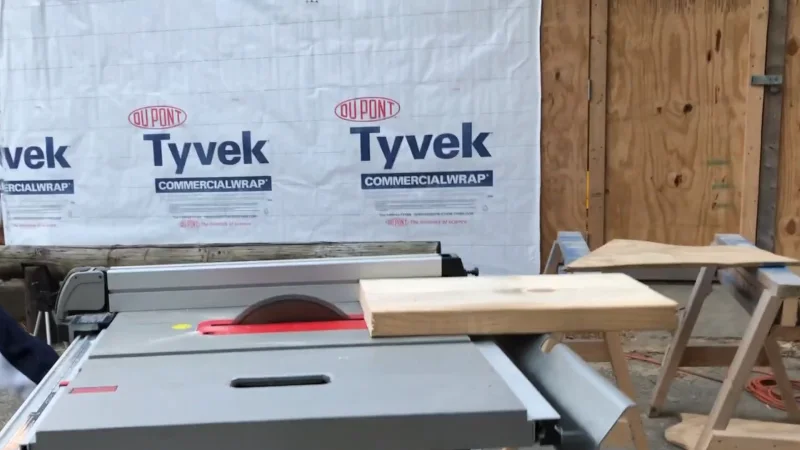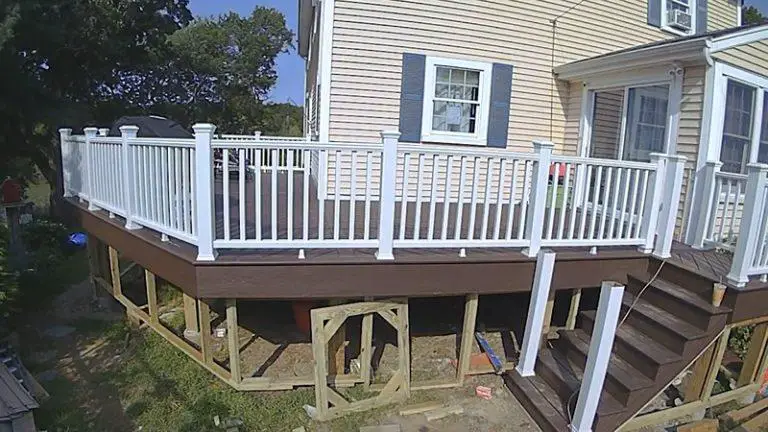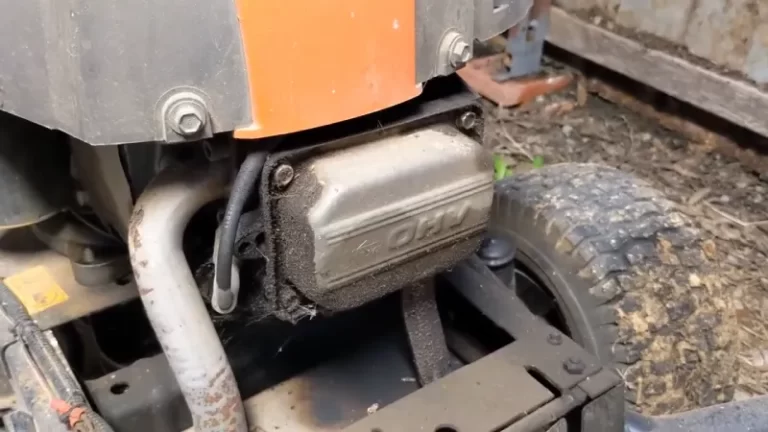Bosch 4100 Table Saw Problems and Solutions

The Bosch 4100 table saw is a popular and well-regarded tool among woodworkers and DIY enthusiasts. However, like any piece of equipment, it can experience problems.
In this blog, we will discuss some of the common issues that users have reported with the Bosch 4100 table saw and provide possible solutions for each problem.
By understanding these problems, you can take steps to avoid them or fix them should they occur. The purpose of this blog is to help users of the Bosch 4100 table saw troubleshoot and maintain their tool so they can continue to use it effectively and safely.
You'll Learn About
Bosch 4100 Table Saw Problems
The problem with the Bosch 4100 table saw can have the blade adjustment mechanism. Some users have reported that the gears are turning, but the blade is not lowering or raising.
It’s possible that the problem is with a specific part of the blade adjustment mechanism, such as the #31 slides or the #55. It’s also possible that the saw is not lubricated properly.
It’s recommended to check the owner’s manual for lubrication instructions and to clean and lubricate the #56 shafts, #58 and #60 drive as a starting point. Some users have had success with using a silicone lubricant or WD-40 on the guide pins.
If the problem persists, it may be necessary to contact Bosch service or consider selling the saw and purchasing a different brand.
Problem 1: Difficulty Cutting Thin Strips
One of the common issues reported with the Bosch 4100 table saw is difficulty cutting thin strips. This can manifest as the saw not making clean, precise cuts or the wood splitting or breaking.
Possible Causes
There are several possible causes for this problem. The blade may not be adjusted properly, causing it to be too high or too low. The blade may also not be sharp enough, resulting in rough or uneven cuts. The fence may also be out of alignment, causing the wood to be cut at an angle rather than straight.
Solutions
To fix this problem, the first step is to ensure that the blade is adjusted properly. Refer to the owner’s manual for instructions on how to adjust the blade height. Next, check the sharpness of the blade and sharpen or replace it if necessary. Finally, check the alignment of the fence and adjust it if needed. Keep in mind, it’s important to regularly check and adjust the blade and fence to avoid this problem.
Problem 2: Issues With Dowel
Another common problem with the Bosch 4100 table saw is issues when cutting dowels. This can include difficulty making accurate cuts, the dowel splitting or breaking, or the saw not cutting through the dowel at all.
Possible Causes
The cause of this problem can be similar to that of difficulty cutting thin strips. The blade may not be adjusted properly, causing it to be too high or too low. The blade may also not be sharp enough, resulting in rough or uneven cuts. The fence may also be out of alignment, causing the dowel to be cut at an angle rather than straight. Additionally, the dowel may be too thick for the saw blade to handle properly.
Solutions
To fix this problem, the first step is to ensure that the blade is adjusted properly and is sharp enough. Refer to the owner’s manual for instructions on how to adjust the blade height and sharpening the blade. Next, check the alignment of the fence and adjust it if needed. It’s also important to use the appropriate size of saw blade for the thickness of the dowel. If the problem persists, it’s recommended to test different blades and choose the one that works best for your specific dowel size.
Problem 3: Blade Adjustment Mechanism
One of the most reported issues with the Bosch 4100 table saw is the blade adjustment mechanism not functioning properly. This can include the blade not raising or lowering, gears turning but the blade not moving or the wheel not making the gears turn.
Possible Causes
This problem can be caused by a variety of factors. The gears may not be lubricated properly, causing them to seize. The parts of the mechanism may be worn out, causing them to not function properly. The problem can also occur if the saw is not used or maintained regularly.
Solutions
The first step to fix this problem is to ensure that the gears are lubricated properly. Refer to the owner’s manual for instructions on lubricating the gears. It’s also important to keep in mind that lubrication should be done regularly.
If the gears are still not functioning properly, it’s recommended to check for worn out parts and replace them if necessary. If the problem persists even after checking the lubrication and replacing worn out parts, it’s recommended to contact Bosch service for further assistance.
Tips While Working With a Saw
- Use the right blade for the job: Using the correct blade for the type of wood and cut you are making can help prevent problems with the saw and improve the quality of your cuts.
- Check the alignment of the miter gauge: The miter gauge is used to make angled cuts, and if it’s not properly aligned, it can cause the saw to cut at an angle, resulting in uneven or inaccurate cuts.
- Keep the saw clean and free of sawdust: Sawdust can build up and cause problems with the saw’s moving parts, so it’s important to clean the saw regularly and keep it free of sawdust.
Use the Proper Technique When Cutting
Using the proper technique when cutting can help prevent problems with the saw and improve the quality of your cuts. Make sure to use a steady, consistent pace and keep your hands and fingers away from the blade.
- Check for loose parts: Before using the saw, make sure that all parts are securely in place and tightened.
- Check the blade guard: The blade guard is a safety feature that protects the operator from the blade, make sure it’s in good condition and properly installed.
- Use proper extension cords: Make sure that the extension cord you’re using is of the correct gauge and length.
- Use proper Personal Protective Equipment(PPE): Always wear eye and ear protection, gloves, and dust mask when working with the saw.
FAQs
Q: How do I adjust the blade on my Bosch 4100 table saw?
A: Refer to the owner’s manual for instructions on how to adjust the blade height. Typically, the blade height can be adjusted by turning the adjustment knob or lever located near the blade.
Q: Why is my Bosch 4100 table saw not cutting straight?
A: This can be caused by a variety of factors, including a dull or misaligned blade, or an out-of-alignment fence. Make sure the blade is sharp and properly aligned, and check the alignment of the fence and adjust it if necessary.
Q: How often should I lubricate the gears on my Bosch 4100 table saw?
A: Refer to the owner’s manual for specific lubrication instructions, but it’s generally recommended to lubricate the gears at least once a year or more frequently if the saw is used frequently.
Q: Can I sharpen the blade on my Bosch 4100 table saw?
A: Yes, you can sharpen the blade on your Bosch 4100 table saw. Refer to the owner’s manual for specific instructions on how to sharpen the blade, or consult with a professional sharpening service.
Q: Can I use a dado blade on my Bosch 4100 table saw?
A: Yes, dado blades can be used on the Bosch 4100 table saw. However, it’s important to check the owner’s manual for specific recommendations and guidelines on using a dado blade with this saw. It’s different then heat exchanger problems.
Conclusion
In conclusion, the Bosch 4100 table saw is a popular and well-regarded tool, but like any piece of equipment, it can experience problems. The three main problems discussed in this blog are difficulty cutting thin strips, issues with dowel and blade adjustment mechanism not functioning properly.
Each of these problems have possible causes and solutions, including adjusting blade properly, sharpening blade, lubricating gears properly, and replacing worn out parts. It’s important to note that regular maintenance and proper lubrication can prevent or minimize these problems.
If the problems persists even after trying the solutions, it’s recommended to contact Bosch service for further assistance. By understanding these common problems and taking the necessary steps to fix them, users of the Bosch 4100 table saw can continue to use it effectively and safely.






